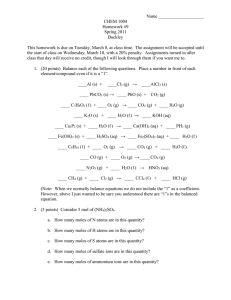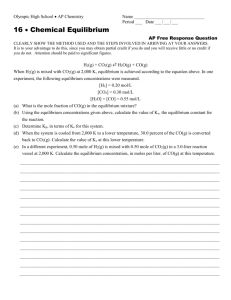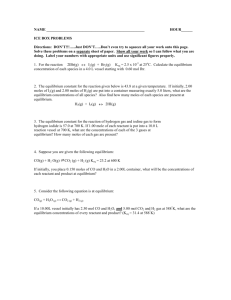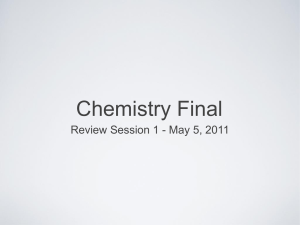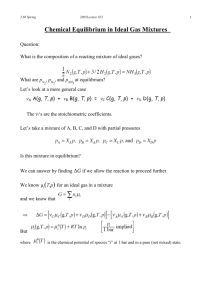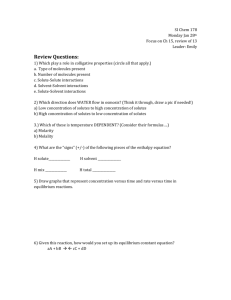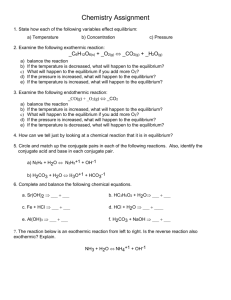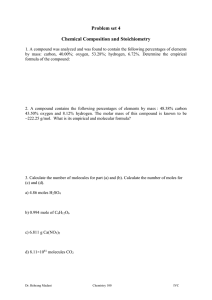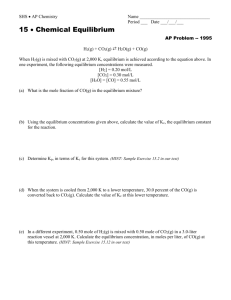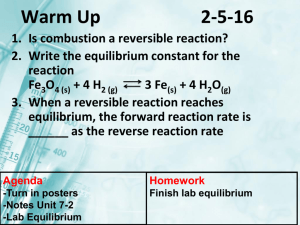CH302 Worksheet 3—Introduction to Chemical Equilibria 1. Write a
advertisement
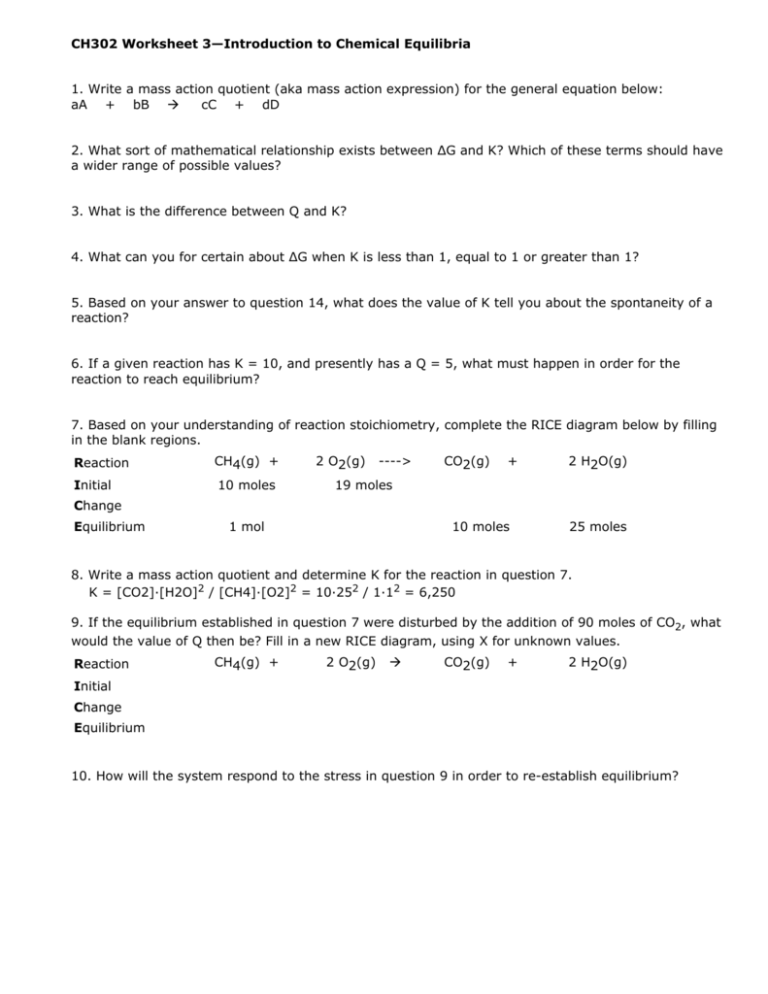
CH302 Worksheet 3—Introduction to Chemical Equilibria 1. Write a mass action quotient (aka mass action expression) for the general equation below: aA + bB cC + dD 2. What sort of mathematical relationship exists between ΔG and K? Which of these terms should have a wider range of possible values? 3. What is the difference between Q and K? 4. What can you for certain about ΔG when K is less than 1, equal to 1 or greater than 1? 5. Based on your answer to question 14, what does the value of K tell you about the spontaneity of a reaction? 6. If a given reaction has K = 10, and presently has a Q = 5, what must happen in order for the reaction to reach equilibrium? 7. Based on your understanding of reaction stoichiometry, complete the RICE diagram below by filling in the blank regions. Reaction CH4(g) + Initial 10 moles 2 O2(g) ----> CO2(g) + 2 H2O(g) 19 moles Change Equilibrium 1 mol 10 moles 25 moles 8. Write a mass action quotient and determine K for the reaction in question 7. K = [CO2]·[H2O]2 / [CH4]·[O2]2 = 10·252 / 1·12 = 6,250 9. If the equilibrium established in question 7 were disturbed by the addition of 90 moles of CO2, what would the value of Q then be? Fill in a new RICE diagram, using X for unknown values. Reaction CH4(g) + 2 O2(g) CO2(g) + 2 H2O(g) Initial Change Equilibrium 10. How will the system respond to the stress in question 9 in order to re-establish equilibrium?
